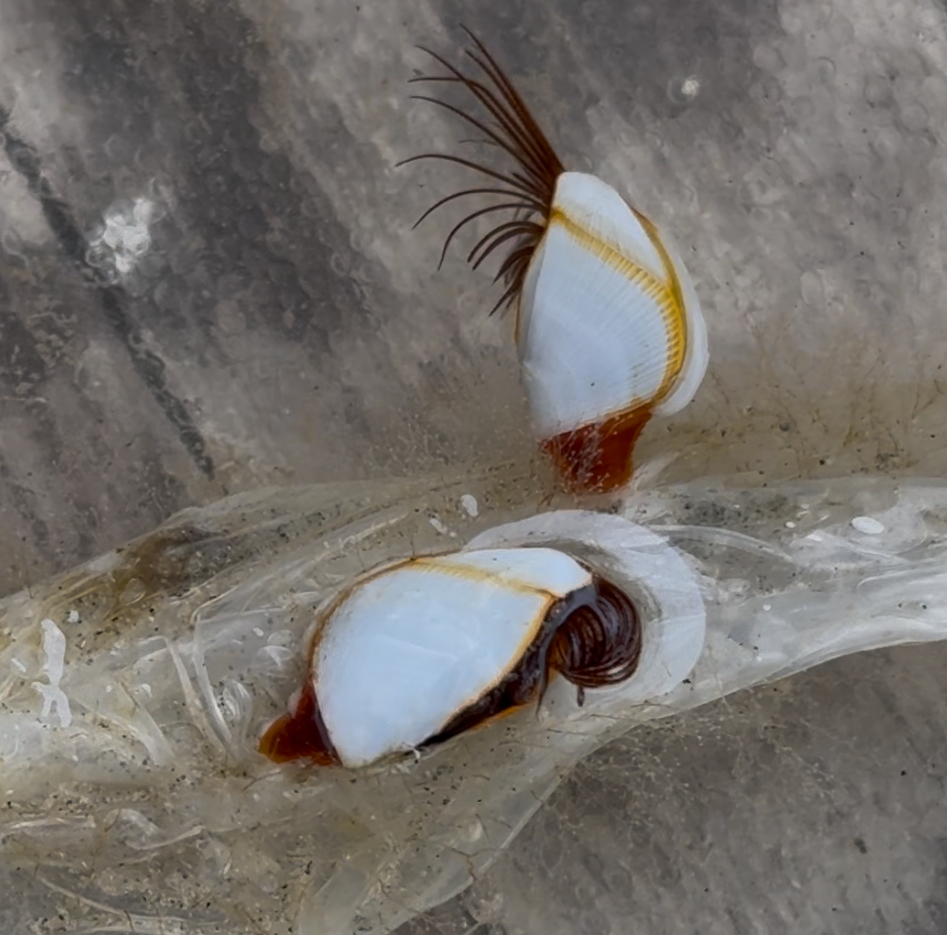Gooseneck Barnacles

Gooseneck barnacles filter feeding while attached to a water bottle!
Earlier this week we talked about marine debris—we’d like to restate that it is any non-man made item that has found its way into our oceans. Sometimes marine debris is in the ocean long enough for organisms to attach and grow on. One great example of an organism that attaches to marine debris, especially floating plastics, is the gooseneck barnacle, Lepas anatifera.
The gooseneck barnacle, is a marine organism that belongs to the phylum arthropoda meaning, jointed limb. Unlike barnacles that settle on rocky shores, Lepas anatifera prefers a nomadic lifestyle, clinging to debris, ships, driftwood, or even sea turtles. Its distinct appearance—long, flexible stalks (or “necks”) that connect the barnacle’s shell-covered body to its floating home—helps it adapt to the constantly moving environment of the open sea. These barnacles have feather-like appendages that extend out to filter feed, catching plankton and nutrients from surrounding water.
This species holds a unique place in marine biology and folklore. Historically, Lepas anatifera inspired myths due to its appearance and habitat. Medieval Europeans believed these barnacles were linked to barnacle geese, thinking that the birds hatched from the barnacles since they shared a similar “gooseneck” shape and because barnacle geese seemed to appear and disappear seasonally without known nesting grounds. (Which came first the gooseneck barnacle or the barnacle goose!?) This folklore has since been disproven but what a great story to tell!
